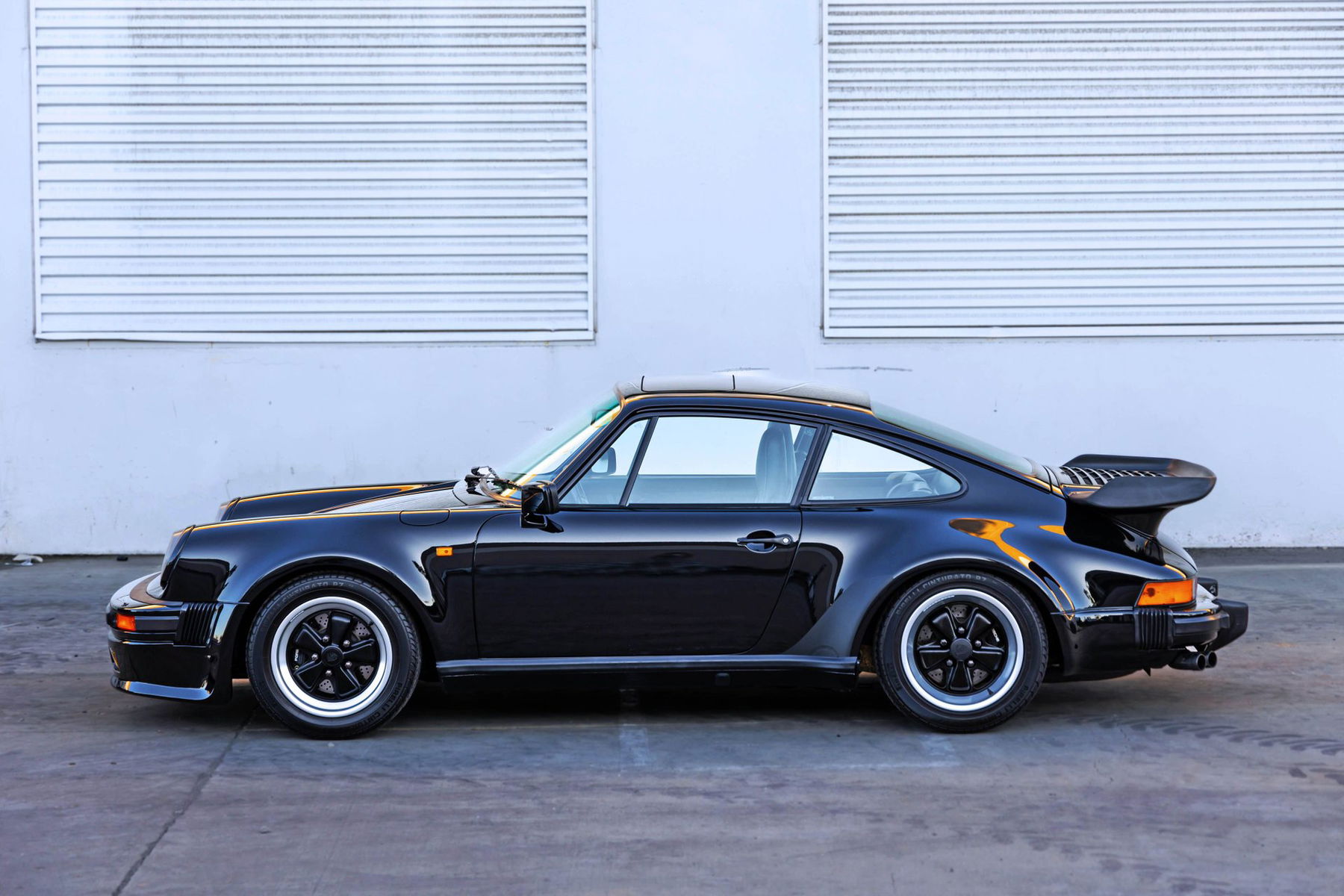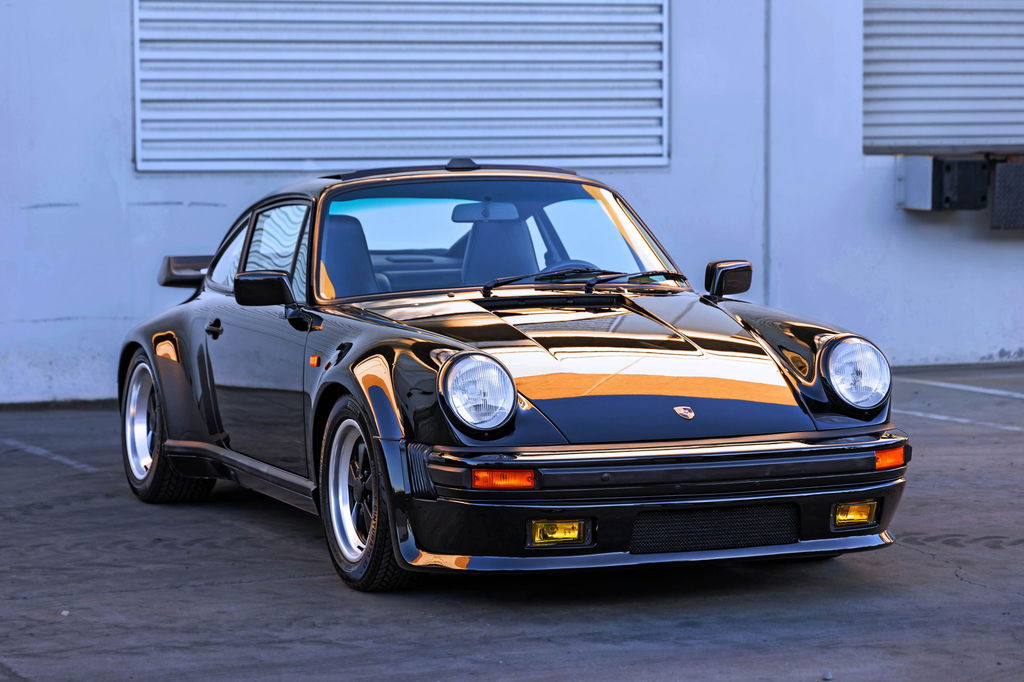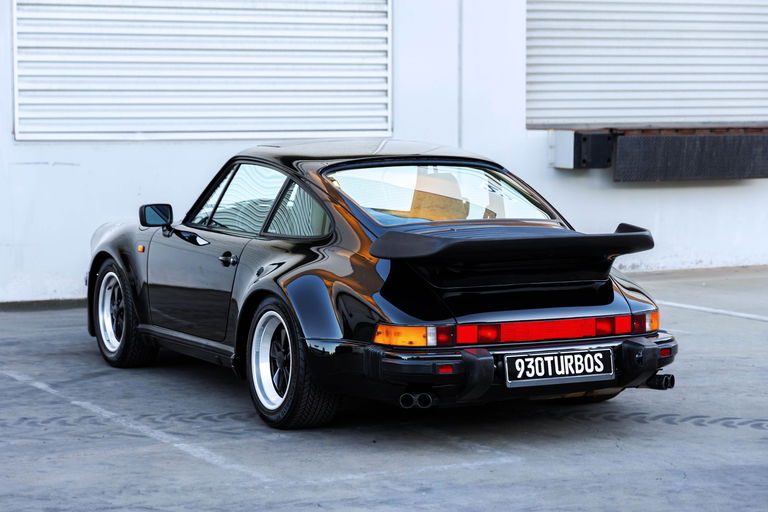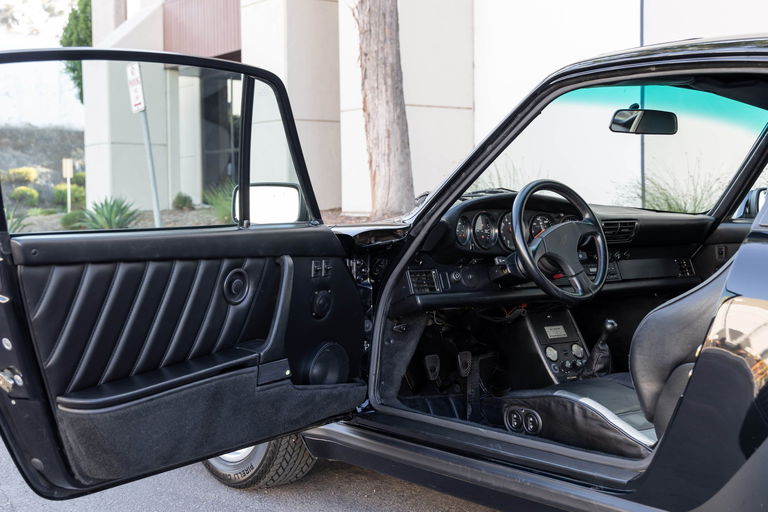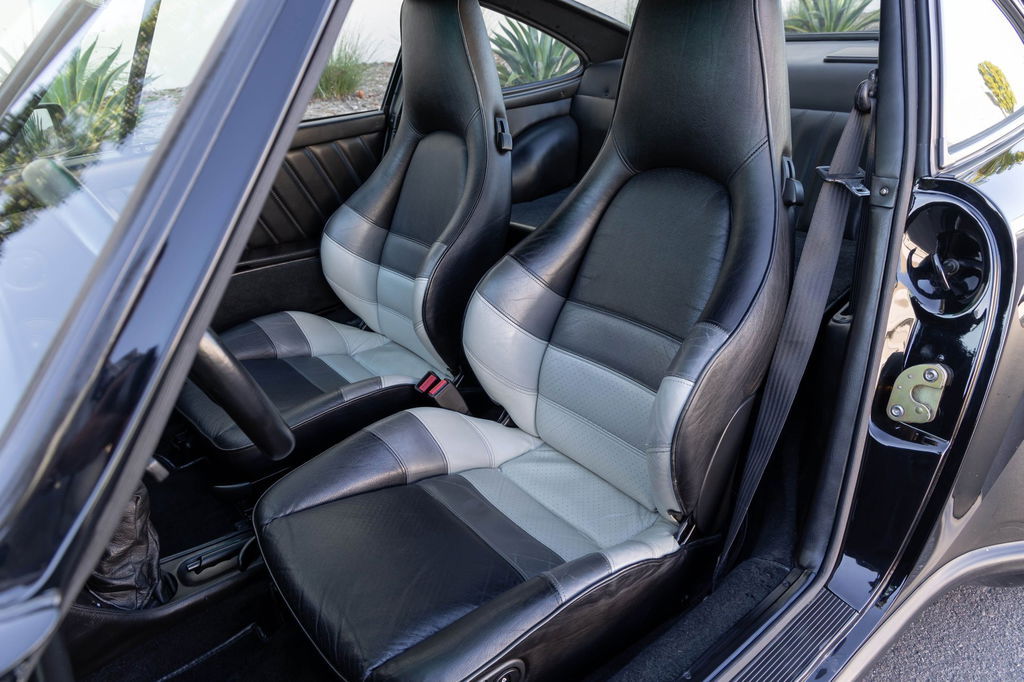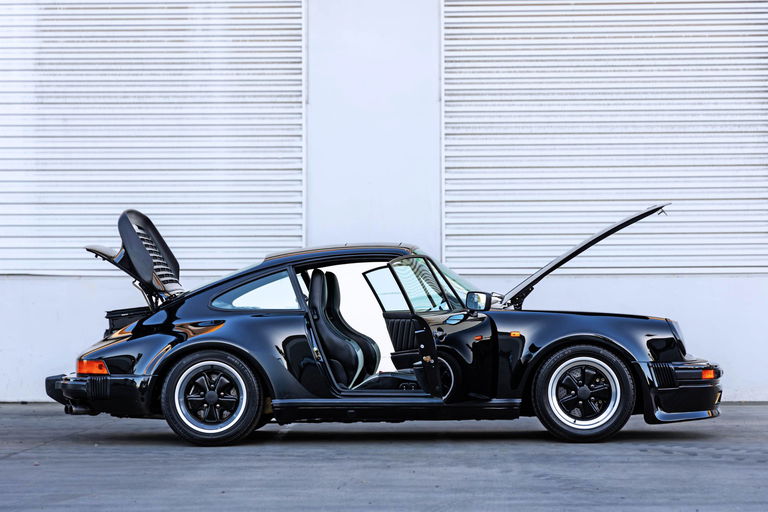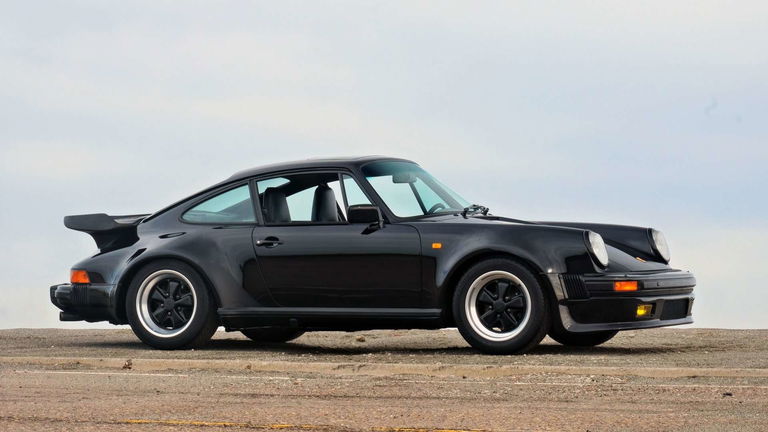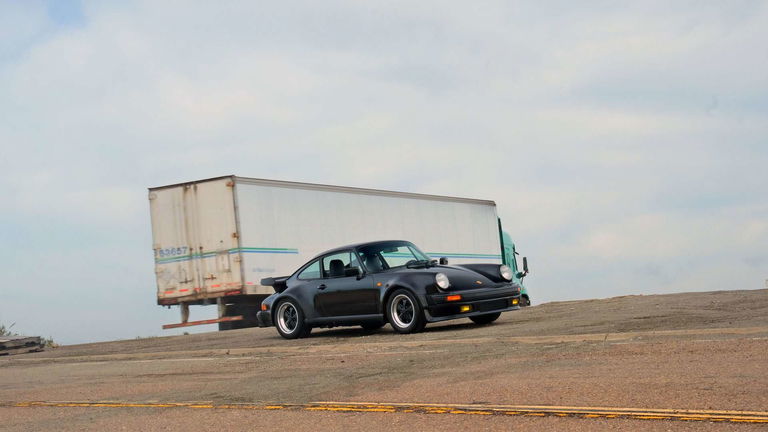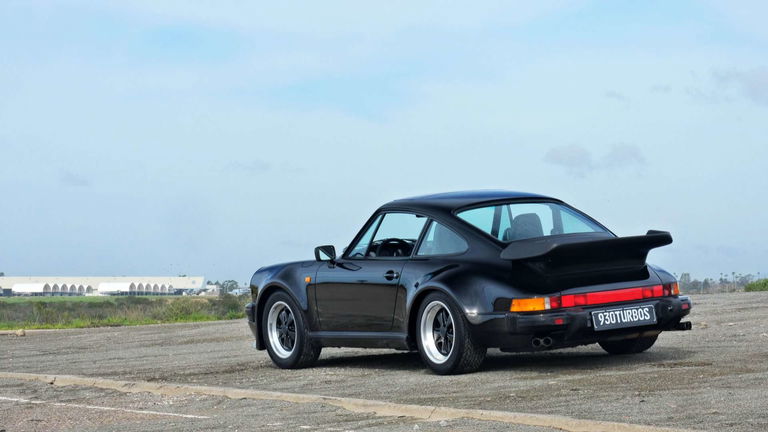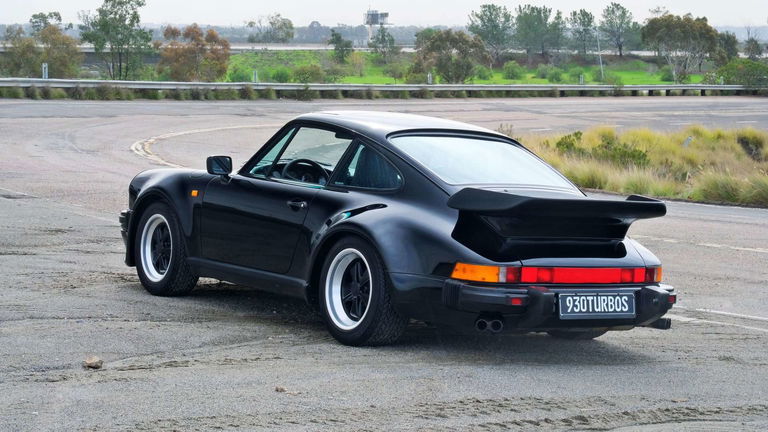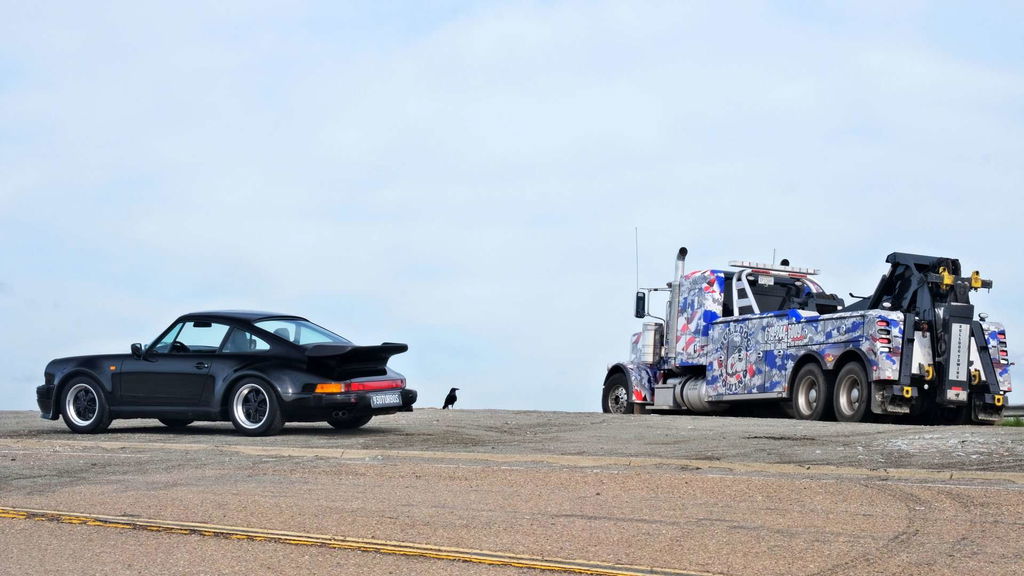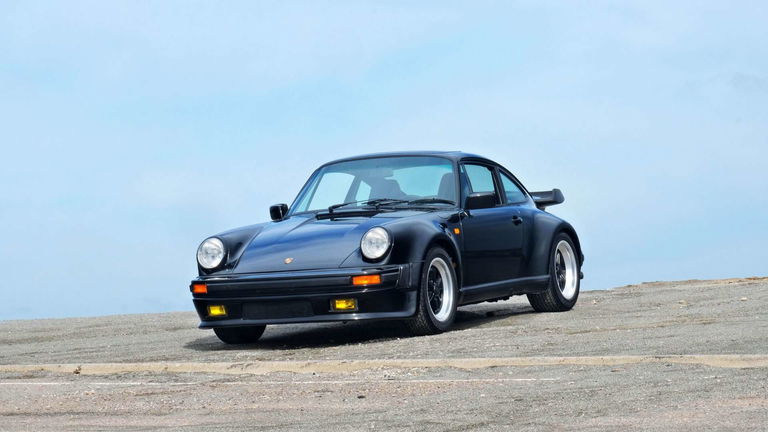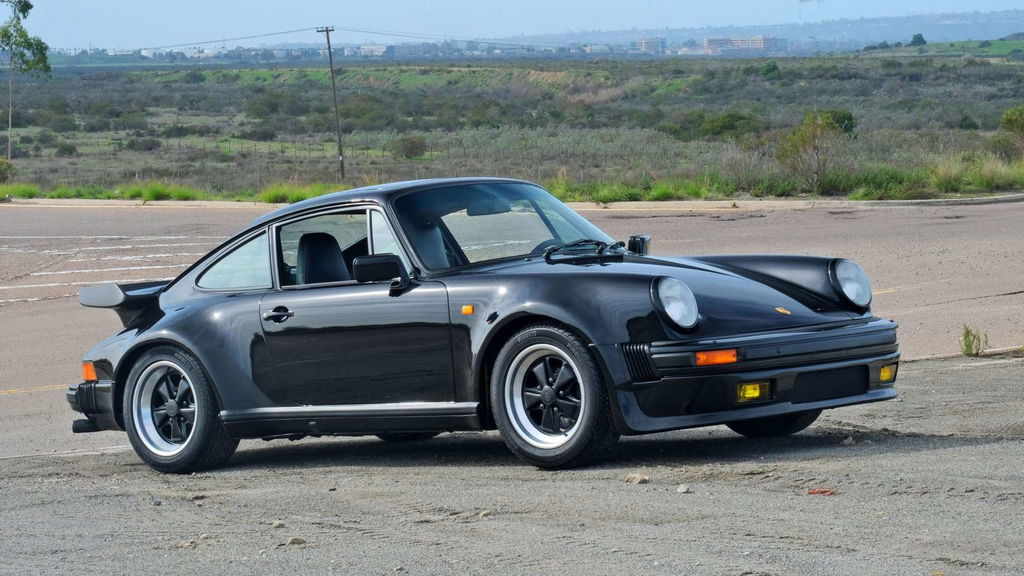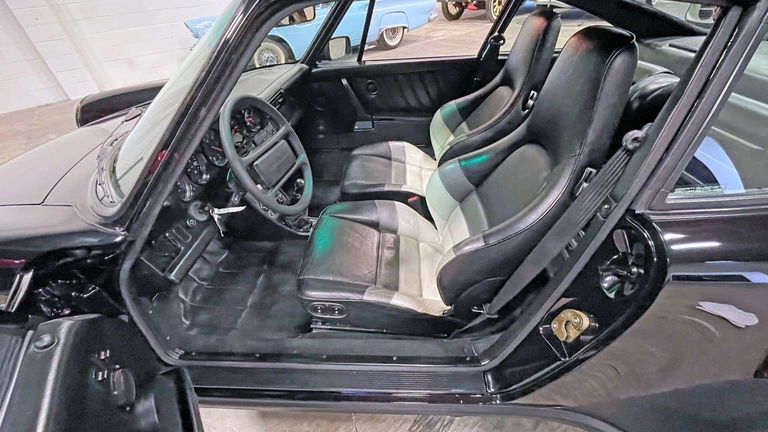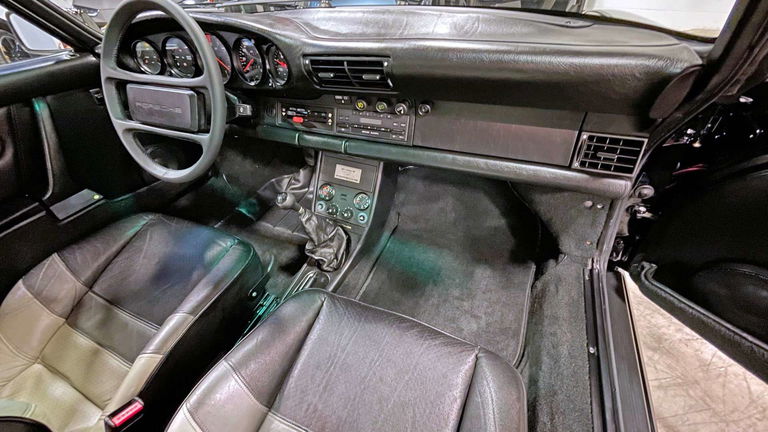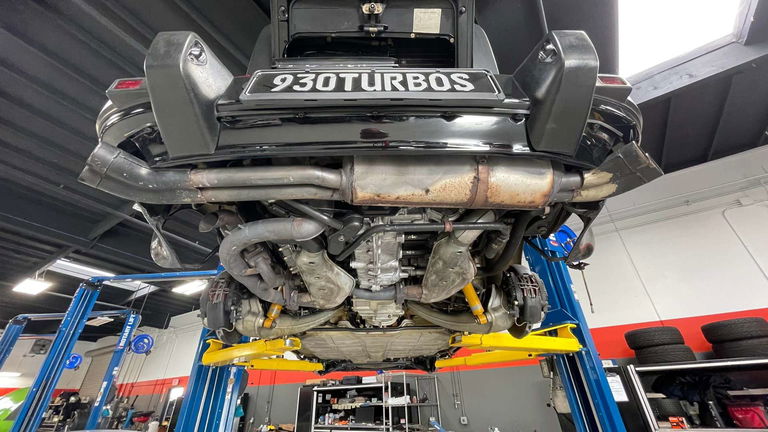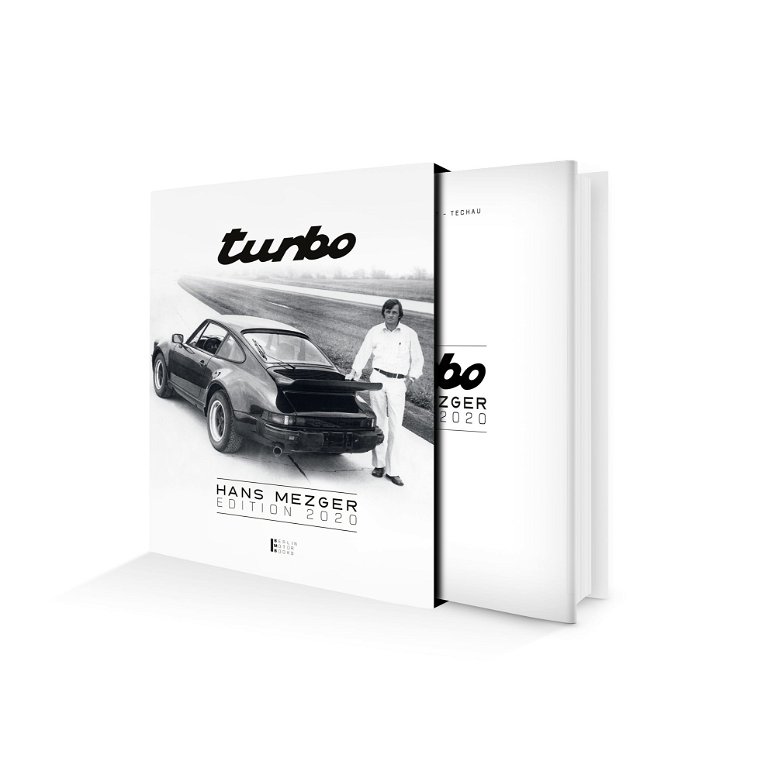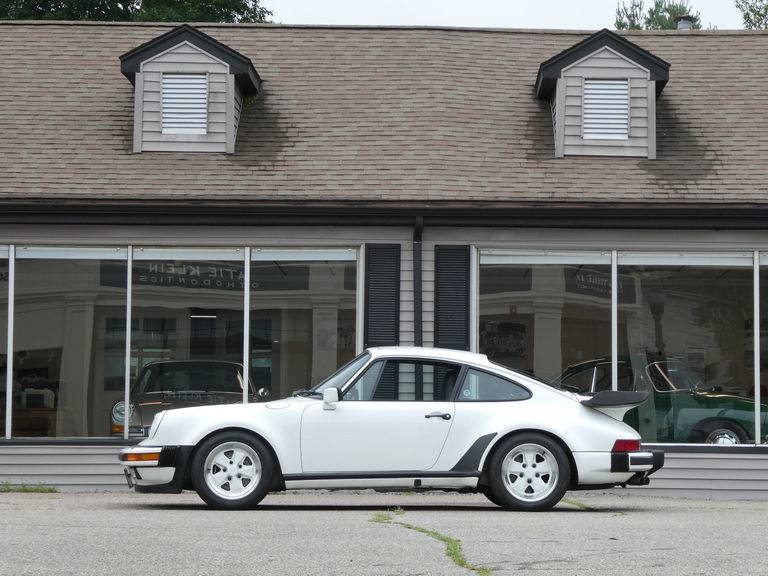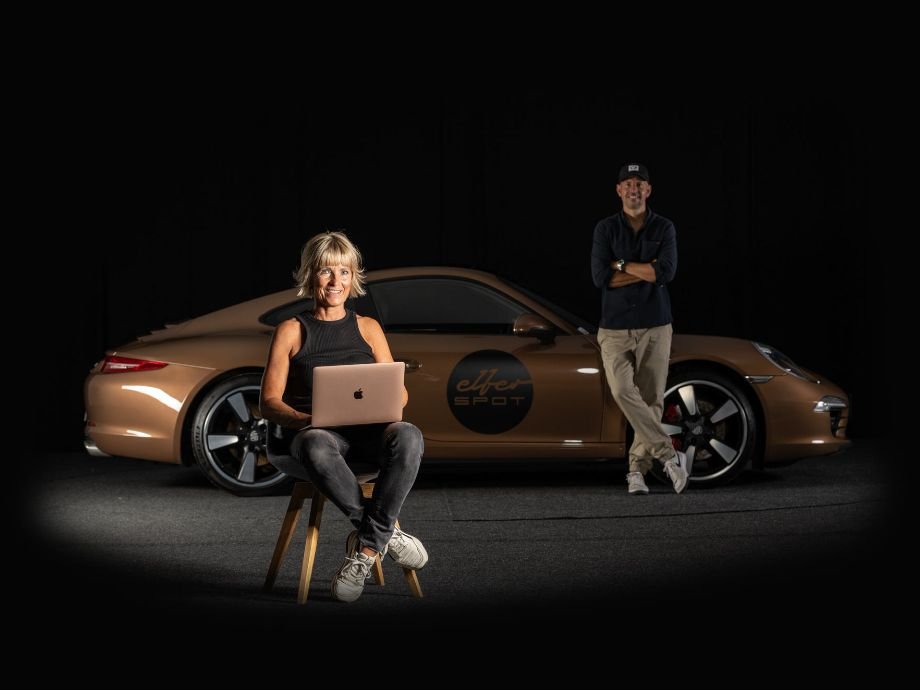Porsche 911 Turbo S 3.3
Highlights
- WP0ZZZ93ZKS000578
- Rare opportunity!
- Porsche Exclusive!
1989 Porsche 930 Turbo S for sale!
This 1989 Porsche 911 Turbo is #7 of 10 examples ordered with the Special Turbo Powerkit by France-based Porsche distributor Sonauto through the automaker’s Exclusive program. It was reportedly purchased new by a former Toyota Motor Corporation executive and was subsequently sent to RUF Automobile of Pfaffenhausen, Germany, to be modified with an upgraded fuel-injection system, a 4R exhaust system, an in-cockpit boost controller, and RUF gauges. The car was exported to Japan in 1990 and later relocated to Germany in 2016, where it was acquired by the selling dealer in October 2022. Finished in paint-to-sample Two-Layer Black over black leather upholstery, the car is powered by a turbocharged 3.3-liter 930/66S flat-six mated to a G50 five-speed manual transaxle and a limited-slip differential. Optional factory equipment includes a front-mount oil cooler, a unique front spoiler with integrated fog lights, the Sport Suspension package, staggered-width Fuchs alloy wheels, sport seats with multi-tone inserts, and a Type B center console with integrated VDO auxiliary gauges. This 930 Turbo shows 68k kilometers (~42k miles) and is offered by the selling dealer in San Diego, California, with factory books, tools, a Porsche Certificate of Authenticity, a Porsche Classic Technical Certificate, removed parts, German-language records, import documents, and a clean Montana title.
